Two-way Radio Basics
Peanut Butter
Full Time Jeeper
- Posts
- 2,591
- Media
- 37
- Resources
- 1
- Thanks
- 15
- Location
- Boerne, Texas
- Vehicle(s)
- 1979 Jeep CJ7 TH400 Automatic 258 I6 Quadratrac Amc 20 rear & Dana 30 front, 32 x 11.5 x 15 tires. Currently a Complete Custom Rebuild in progress.
Also I own a 2001 Jeep Cherokee, White, all stock with 4.0L. automatic, and police package. Best part of that is it came with leather seats! This package also has the NP242 Transfer Case, 8.25 rear end, and trailer towing package.
There is a very popular ad in all the 4 wheel drive magazines for a heavy duty two-way radio. Never really gave it much thought as most radios meet the Mil-Std 810 for water resistance, shock proof, and dust proof. Then I talked to an individual that actually purchased a radio from these people. He was way in over his head not only legally but technically too. You see they sold him a radio, but forgot to mention he needed a license to operate it. So I thought I would sit down and write a little information about this.
Two-way Radio use in 4 wheel drives is becoming more and more popular. Used in racing for many years now, two-way radios provide communication in remote areas where cell phones have a tendency to not work so well. Two-way radios run the gambit from simple cheap radios found in Wal-Mart to the very expensive radios you can only purchase from a dealer. Before we can talk about specific radios, let’s first talk about frequency and power,
FREQUENCY: Radio frequencies vary from as low as 0000.500 MHz (megahertz) to as high as 5 gHz (gigahertz). Generally we can group these frequencies together with abbreviations, such as HF (high frequency), VHF (very high frequency), UHF (ultra-high frequency), and Microwave. It is also good to know that as a frequency increases the wave length of that frequency decreases. This will help us identify different types of radios and their antennas.
The one radio most of us are familiar with is the CB. The CB was one of the first mass produced radios for the general public that was easy to obtain and get a license for. Today the use of the CB radio is license free. CB radios are in the HF category of the radio spectrum. Their frequencies are from 26 MHz to 28 MHz. CBs are low power radios with an average output of 4 to 12 watts, depending on the mode. CB radios make great first time use radios as they are cheap and do not require a license. They are readily available and easy to install. The downfall to a CB radio is that they are generally noisy due to the mode of operation and the lack the power to reliably talk long distances. The antenna used is very long also. CBs use the AM mode just like your car radio or the SSB mode (single side band mode). Just as your car radio is noisier on AM than on the FM stations. The distance they cover is Limited by their power output and atmospheric conditions.
The CB was one of the first mass produced radios for the general public that was easy to obtain and get a license for. Today the use of the CB radio is license free. CB radios are in the HF category of the radio spectrum. Their frequencies are from 26 MHz to 28 MHz. CBs are low power radios with an average output of 4 to 12 watts, depending on the mode. CB radios make great first time use radios as they are cheap and do not require a license. They are readily available and easy to install. The downfall to a CB radio is that they are generally noisy due to the mode of operation and the lack the power to reliably talk long distances. The antenna used is very long also. CBs use the AM mode just like your car radio or the SSB mode (single side band mode). Just as your car radio is noisier on AM than on the FM stations. The distance they cover is Limited by their power output and atmospheric conditions.
Other radios not requiring a license are MURS (Multi-Use Radio Service),
MURS (Multi-Use Radio Service),
 FRS (Family Radio Service), and
FRS (Family Radio Service), and
 LPRS (Low Power Radio Service). These are in the VHF & UHF radio spectrum. They all have power output limitations which correspond to mostly handheld radios. Many of these are what we call bubble-pack radios. Bubble-pack radios are the radios you find on the Wal-Mart shelf and other such retail stores. Most of these radios have fixed antenna, fixed channels, and are Limited on power. MURS is a 2 watt 5 channel max VHF radio. FRS is a ½ watt 14 channel max UHF radio. LPRS is a ½ watt 10 channel max UHF (900 MHz) radio. The range of these radios is generally what we refer to as line of sight. If you can see the other radio…you can talk to it. Keep in mind that as you go up in frequency, the maximum distance decreases, the amount of power used also decreases, but your signal will travel through buildings etc. better.
LPRS (Low Power Radio Service). These are in the VHF & UHF radio spectrum. They all have power output limitations which correspond to mostly handheld radios. Many of these are what we call bubble-pack radios. Bubble-pack radios are the radios you find on the Wal-Mart shelf and other such retail stores. Most of these radios have fixed antenna, fixed channels, and are Limited on power. MURS is a 2 watt 5 channel max VHF radio. FRS is a ½ watt 14 channel max UHF radio. LPRS is a ½ watt 10 channel max UHF (900 MHz) radio. The range of these radios is generally what we refer to as line of sight. If you can see the other radio…you can talk to it. Keep in mind that as you go up in frequency, the maximum distance decreases, the amount of power used also decreases, but your signal will travel through buildings etc. better.
Next is GMRS (General Mobile Radio Service). GMRS requires a license from the FCC which is currently $80 for an entire family for 5 years. It has 16 Channels or any combination of those channels. You can use a repeater. The maximum power output is 50 watts for a mobile and 5 watts for a handheld. These radios will cove large distances of up to 40 or 50 miles with the right equipment. The frequency is in the UHF range. Antennas vary from a few inches to several feet.
Commercial Business radios. A license is required from the FCC. The cost of the license depends on the frequency used, and the type of system used, but can be hundreds of dollars. Radios for this group are usually very expensive and you are Limited to talking within your business only.
A license is required from the FCC. The cost of the license depends on the frequency used, and the type of system used, but can be hundreds of dollars. Radios for this group are usually very expensive and you are Limited to talking within your business only.
Amateur Radio requires a license and the passing of a test by the FCC. The radio frequencies used includes some of all of the categories. Some radios are expensive and some are not. You can only talk to other amateur radio operators. You have the ability to talk locally or around the world.
requires a license and the passing of a test by the FCC. The radio frequencies used includes some of all of the categories. Some radios are expensive and some are not. You can only talk to other amateur radio operators. You have the ability to talk locally or around the world.
WHAT TO USE: So now that you have a basic knowledge of what is available, what do you use? This all depends on what the purpose of your communication. For emergencies, somebody needs to be listening. There are no guarantees that will happen on any of these radios, but some are more commonly used than others. For a cheap vehicle to vehicle radio, it is hard to beat the FRS bubble-pack radio. For a good mobile that several vehicles can talk to GMRS is a good route. Better than nothing is a good CB. Find out what the clubs and others in your area are using. Be sure you obtain the proper FCC license as they do issue fines and jail time for miss-using radio frequencies. The FCC publishes a list of these fines every month on their web site. A while back truckers were using amateur radios illegally, so the FCC went after the Trucking companies. Many received large fine and had equipment confiscated. Some individuals were fined $10,000 or more. Google Search will reveal lots of information on the subject. Go to CFR Title 47 Part 95 of the FCC Regulations. If you want to go whole hog, check out www.arrl.org for information on amateur radio and where you can test in your area. But by all means, put something in your Jeep and talk to others. Rod
Two-way Radio use in 4 wheel drives is becoming more and more popular. Used in racing for many years now, two-way radios provide communication in remote areas where cell phones have a tendency to not work so well. Two-way radios run the gambit from simple cheap radios found in Wal-Mart to the very expensive radios you can only purchase from a dealer. Before we can talk about specific radios, let’s first talk about frequency and power,
FREQUENCY: Radio frequencies vary from as low as 0000.500 MHz (megahertz) to as high as 5 gHz (gigahertz). Generally we can group these frequencies together with abbreviations, such as HF (high frequency), VHF (very high frequency), UHF (ultra-high frequency), and Microwave. It is also good to know that as a frequency increases the wave length of that frequency decreases. This will help us identify different types of radios and their antennas.
The one radio most of us are familiar with is the CB.
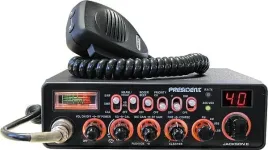 The CB was one of the first mass produced radios for the general public that was easy to obtain and get a license for. Today the use of the CB radio is license free. CB radios are in the HF category of the radio spectrum. Their frequencies are from 26 MHz to 28 MHz. CBs are low power radios with an average output of 4 to 12 watts, depending on the mode. CB radios make great first time use radios as they are cheap and do not require a license. They are readily available and easy to install. The downfall to a CB radio is that they are generally noisy due to the mode of operation and the lack the power to reliably talk long distances. The antenna used is very long also. CBs use the AM mode just like your car radio or the SSB mode (single side band mode). Just as your car radio is noisier on AM than on the FM stations. The distance they cover is Limited by their power output and atmospheric conditions.
The CB was one of the first mass produced radios for the general public that was easy to obtain and get a license for. Today the use of the CB radio is license free. CB radios are in the HF category of the radio spectrum. Their frequencies are from 26 MHz to 28 MHz. CBs are low power radios with an average output of 4 to 12 watts, depending on the mode. CB radios make great first time use radios as they are cheap and do not require a license. They are readily available and easy to install. The downfall to a CB radio is that they are generally noisy due to the mode of operation and the lack the power to reliably talk long distances. The antenna used is very long also. CBs use the AM mode just like your car radio or the SSB mode (single side band mode). Just as your car radio is noisier on AM than on the FM stations. The distance they cover is Limited by their power output and atmospheric conditions.Other radios not requiring a license are
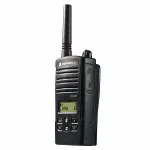 MURS (Multi-Use Radio Service),
MURS (Multi-Use Radio Service),
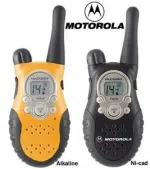 FRS (Family Radio Service), and
FRS (Family Radio Service), and
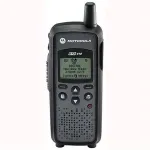 LPRS (Low Power Radio Service). These are in the VHF & UHF radio spectrum. They all have power output limitations which correspond to mostly handheld radios. Many of these are what we call bubble-pack radios. Bubble-pack radios are the radios you find on the Wal-Mart shelf and other such retail stores. Most of these radios have fixed antenna, fixed channels, and are Limited on power. MURS is a 2 watt 5 channel max VHF radio. FRS is a ½ watt 14 channel max UHF radio. LPRS is a ½ watt 10 channel max UHF (900 MHz) radio. The range of these radios is generally what we refer to as line of sight. If you can see the other radio…you can talk to it. Keep in mind that as you go up in frequency, the maximum distance decreases, the amount of power used also decreases, but your signal will travel through buildings etc. better.
LPRS (Low Power Radio Service). These are in the VHF & UHF radio spectrum. They all have power output limitations which correspond to mostly handheld radios. Many of these are what we call bubble-pack radios. Bubble-pack radios are the radios you find on the Wal-Mart shelf and other such retail stores. Most of these radios have fixed antenna, fixed channels, and are Limited on power. MURS is a 2 watt 5 channel max VHF radio. FRS is a ½ watt 14 channel max UHF radio. LPRS is a ½ watt 10 channel max UHF (900 MHz) radio. The range of these radios is generally what we refer to as line of sight. If you can see the other radio…you can talk to it. Keep in mind that as you go up in frequency, the maximum distance decreases, the amount of power used also decreases, but your signal will travel through buildings etc. better.Next is GMRS (General Mobile Radio Service). GMRS requires a license from the FCC which is currently $80 for an entire family for 5 years. It has 16 Channels or any combination of those channels. You can use a repeater. The maximum power output is 50 watts for a mobile and 5 watts for a handheld. These radios will cove large distances of up to 40 or 50 miles with the right equipment. The frequency is in the UHF range. Antennas vary from a few inches to several feet.
Commercial Business radios.
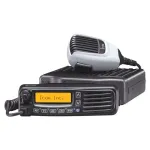 A license is required from the FCC. The cost of the license depends on the frequency used, and the type of system used, but can be hundreds of dollars. Radios for this group are usually very expensive and you are Limited to talking within your business only.
A license is required from the FCC. The cost of the license depends on the frequency used, and the type of system used, but can be hundreds of dollars. Radios for this group are usually very expensive and you are Limited to talking within your business only. Amateur Radio
 requires a license and the passing of a test by the FCC. The radio frequencies used includes some of all of the categories. Some radios are expensive and some are not. You can only talk to other amateur radio operators. You have the ability to talk locally or around the world.
requires a license and the passing of a test by the FCC. The radio frequencies used includes some of all of the categories. Some radios are expensive and some are not. You can only talk to other amateur radio operators. You have the ability to talk locally or around the world. WHAT TO USE: So now that you have a basic knowledge of what is available, what do you use? This all depends on what the purpose of your communication. For emergencies, somebody needs to be listening. There are no guarantees that will happen on any of these radios, but some are more commonly used than others. For a cheap vehicle to vehicle radio, it is hard to beat the FRS bubble-pack radio. For a good mobile that several vehicles can talk to GMRS is a good route. Better than nothing is a good CB. Find out what the clubs and others in your area are using. Be sure you obtain the proper FCC license as they do issue fines and jail time for miss-using radio frequencies. The FCC publishes a list of these fines every month on their web site. A while back truckers were using amateur radios illegally, so the FCC went after the Trucking companies. Many received large fine and had equipment confiscated. Some individuals were fined $10,000 or more. Google Search will reveal lots of information on the subject. Go to CFR Title 47 Part 95 of the FCC Regulations. If you want to go whole hog, check out www.arrl.org for information on amateur radio and where you can test in your area. But by all means, put something in your Jeep and talk to others. Rod


 I still have two CB's, and as our group of Jeeper's grow here in my area, may begin using them again. Rick
I still have two CB's, and as our group of Jeeper's grow here in my area, may begin using them again. Rick